The ultimate goal for any musician when playing a musical instrument is to "Play by Ear". It’s true whether you’re singing, banging a drum, strumming a guitar, or our favorite instrument, the ukulele. If your fingers can already interpret and follow what your inner ear commands, you’ve obtained your goal and are "Playing by Ear."
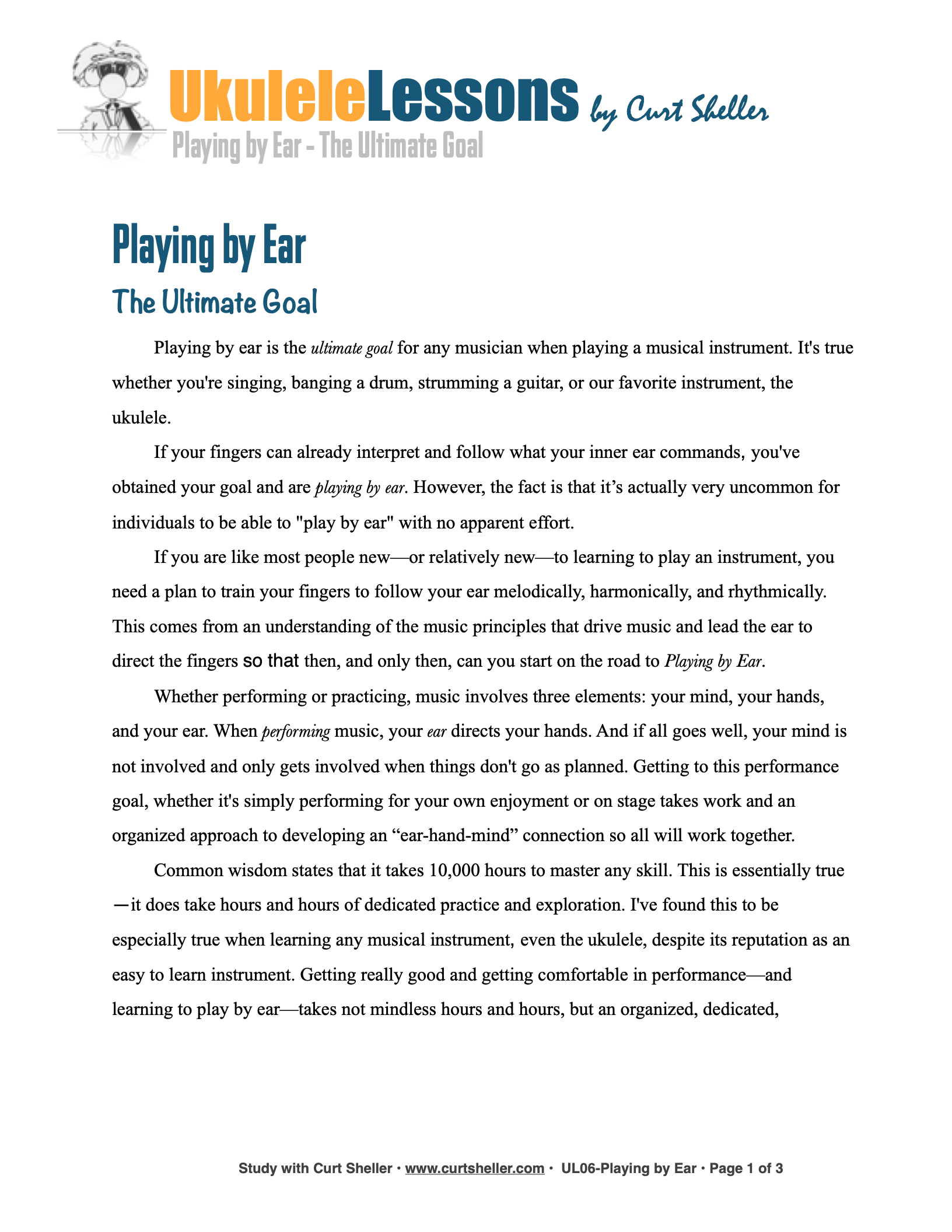
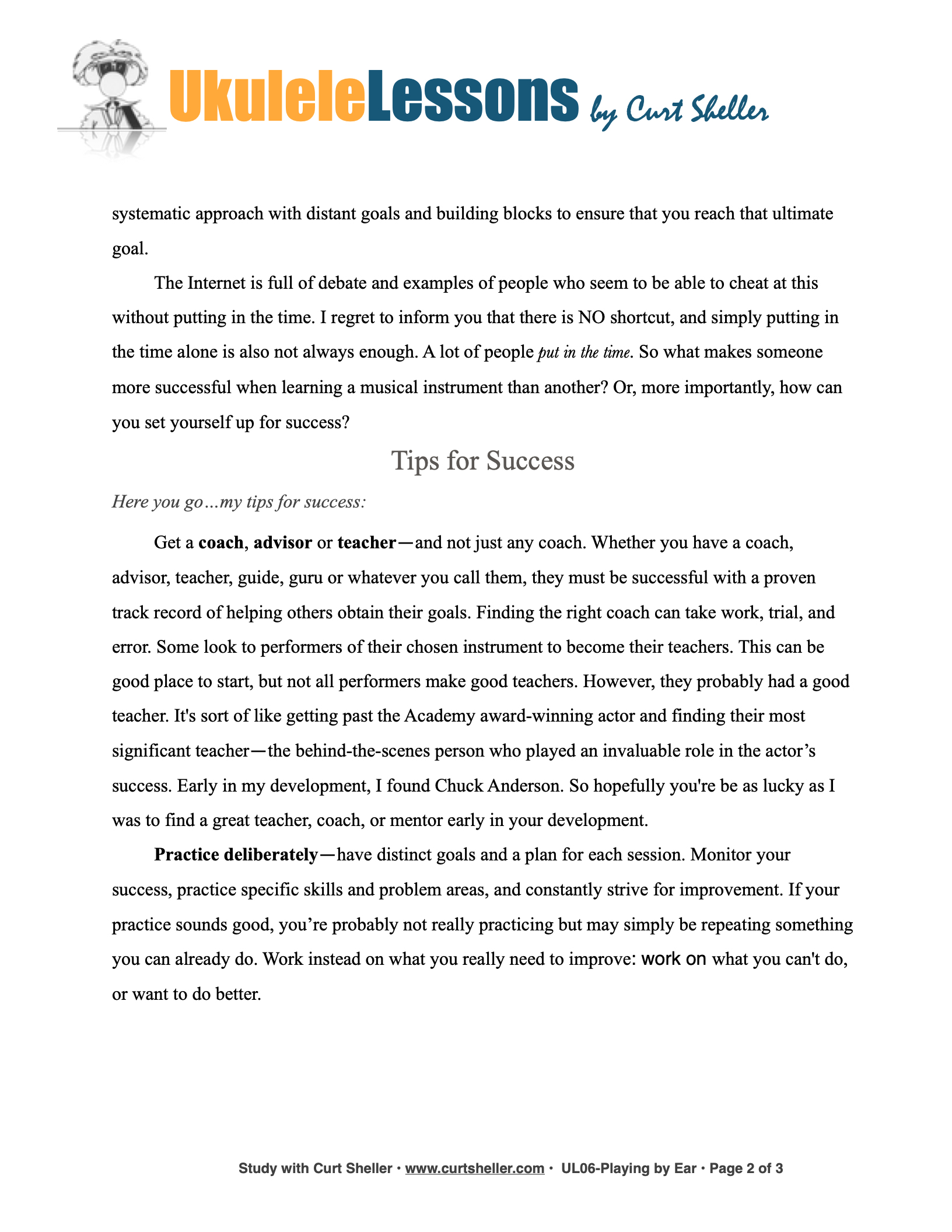
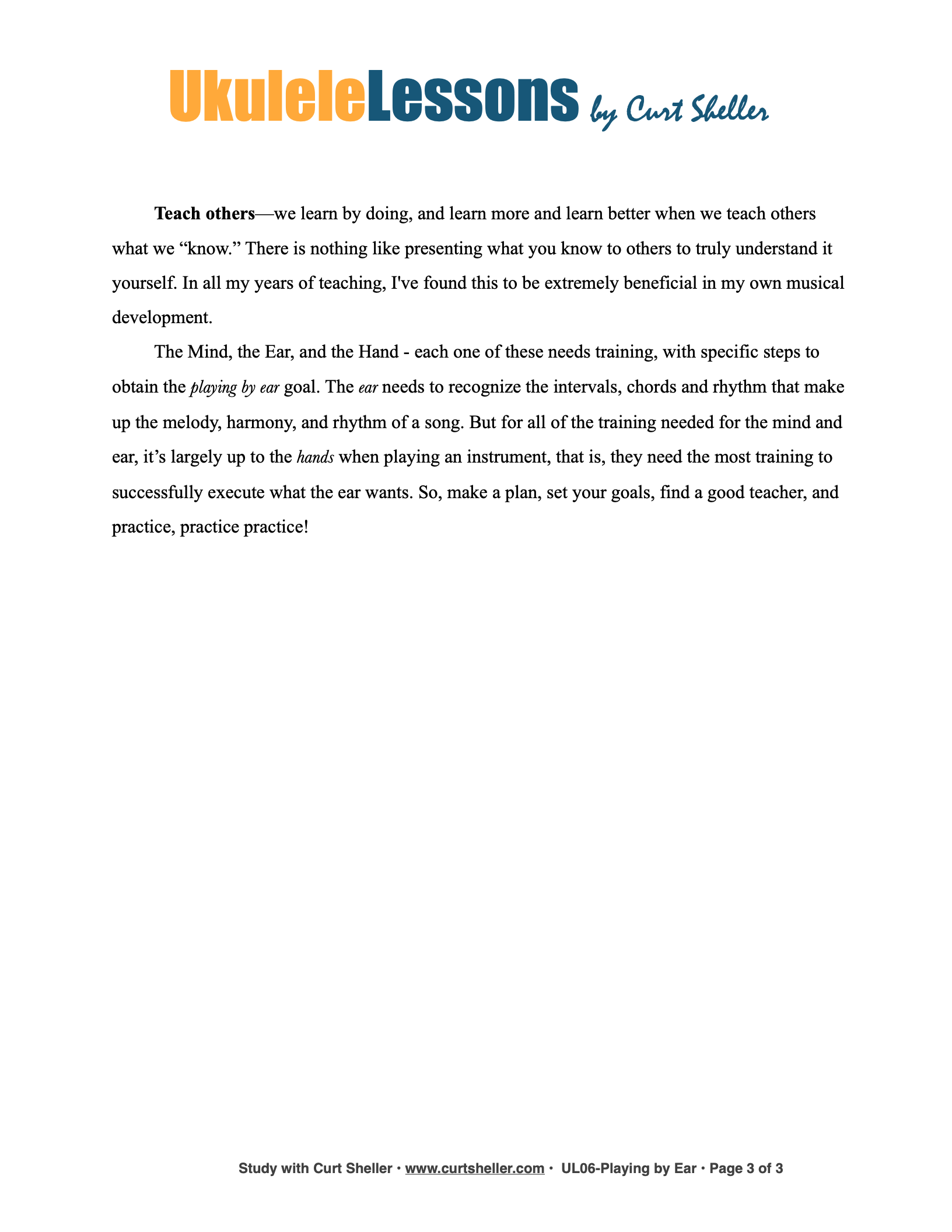



The ultimate goal for any musician when playing a musical instrument is to "Play by Ear". It’s true whether you’re singing, banging a drum, strumming a guitar, or our favorite instrument, the ukulele. If your fingers can already interpret and follow what your inner ear commands, you’ve obtained your goal and are "Playing by Ear."
play by earwith no apparent effort.
playing by ear.
The ultimate goal for any musician when playing a musical instrument is to "Play by Ear". It’s true whether you’re singing, banging a drum, strumming a guitar, or our favorite instrument, the ukulele. If your fingers can already interpret and follow what your inner ear commands, you’ve obtained your goal and are "Playing by Ear."
play by earwith no apparent effort.
playing by ear.
Playing by Ear - The Ultimate Goal
How Long?
How Long Will it Take? – Common wisdom states that it takes 10,000 hours to master any skill. This is essentially true — it does take hours and hours of dedicated, quality practice and exploration. I've found this to be especially true when learning any musical instrument, even the ukulele, despite its reputation as an easy to learn instrument. Getting proficient and comfortable in performance and learning to play by ear takes — not mindless hours and hours of practice, but an organized, dedicated, systematic approach with distant goals. These are the building blocks to ensure that you reach your ultimate potential as a musician.
The Internet is full of debate and examples of people who seem to be able to cheat at this without putting in the time. I regret to inform you that there is NO shortcut, and simply putting in the time alone is not always enough. Many people put in the time. So, what makes someone more successful when learning a musical instrument than another? Or, more importantly, how can you set yourself up for success?
Tips for Success
Here you go — my tips for success:
Get a Coach, Advisor or Teacher — and not just any anybody. Whether you have a coach, advisor, teacher, kumu, guide, guru or whatever you call them, they must be successful with a proven track record of helping others obtain their goals — not simply good players. Finding the right coach can take work and some trial and error. Some look to performers of their chosen instrument to become their teachers. This can be a good place to start, but not all performers make good teachers. However, they probably had a good teacher. It's somewhat like getting past the Academy award-winning actor and finding their most significant teacher — the behind-the-scenes person who played an invaluable role in the actor's success. Early in my development, I found Chuck Anderson. So, hopefully you're being as lucky as I was to find a great teacher, coach, or mentor early in your development.
Practice Deliberately — have distinct goals and a plan for each session. Monitor your success, practice specific skills and problem areas, and constantly strive for improvement. If your practice sounds good, you're probably not really practicing, but may simply be repeating something you can already do. Work instead on what you really need to improve: work on what you can’t do, or want to do better.
Teach Others — we learn by doing, and learn more and learn better when we teach others what we know. There is nothing like presenting what you know to others to truly understand it yourself. In all my years of teaching, I've found this to be extremely beneficial in my own musical development.
The Mind, the Ear, and the Hand – each one of these needs training, with specific steps to obtain the Playing by ear
goal. The ear needs to recognize the intervals, chords, and rhythm that make up the melody, harmony, and rhythm of a song. But for all the training needed for the mind and ear, it's largely up to the hands when playing an instrument, that is, they need the most training to successfully execute what the ear wants. So, plan, set your goals, find a good teacher, and practice, practice, practice!
Playing by Ear
vs. Learning by Ear
Don't get Playing by Ear
and Learning by Ear
mixed up. It's hit-and-miss to try to learn by ear. You need to train your ear and brain to understand what is going on to play by ear. Understanding the principles of how music works will go a long way on your ability to play by ear.
Start with training your ear to identify (hear) and sing melodic intervals .
- AUDIATION — play what you hear [Adam Neely's Bass Lessons #31]
- Emotional Ear Training (ontology + phenomenology in ear training) [Adam Neely's Bass Lessons #21]
- Gordon Institute for Musical Learning
- Hal Galper's Master Class - The Illusion of An Instrument
- The "Secret" to Improving Your Rhythm and Time by Chick Corea
- How To Teach Audiation & Internal Hearing (The Singing Classroom)
Related Lessons, Videos, Lesson Series, Songs, Books & Reference Charts, Resources & Assets, Workshops are below.

An interval is the distance between two notes. An interval has a name and a type. Intervals can be played one note (melodic) or two notes (harmonic) at a time, ascending or descending. Simple and Compound Intervals are taken from a major scale. Chromatic Intervals are NOT taken from a major scale. They are derived from the diatonic intervals.

Playing chords, chord progressions, and songs by ear is all about getting your ear to recognize the sound of chords and chord progressions and just like melodies, train the fingers and the hand to follow your inner ear and play these chords, chord progressions, and songs on demand.

Harmonic Analysis (HA), also known as the study of chord relationships, is the method used to identify the harmonic role of chords within a chord progression or song. A chord progression refers to a sequence of chords, with each chord having a root note and belonging to a specific chord type. The function of a chord within a particular scale's tonality is determined by its relationship to that scale.

Daily Practice Material for the Contemporary Ukulele Player is an organized collection of daily practice and reference material for the contemporary ukulele player. This material can be used to develop the vocabulary and knowledge necessary for single note playing.

Finally, learn the names of the notes of the fingerboard. Learning the notes of your instrument allows you the flexibility of not having to remember so many shapes. There are simply way too many chords, scale and notes patterns, and shapes to remember. It all comes down the notes.
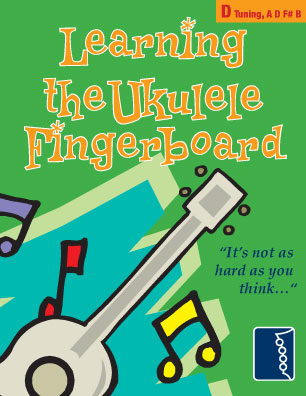
If your goal is to finally learn the names of the notes on the ukulele fingerboard. Then Learning the Ukulele Fingerboard - D Tuning is your answer. Learning the Ukulele Fingerboard - D Tuning, has a step by step approach to finally mastering the ukulele fingerboard.

If your goal is to finally learn the names of the notes on the ukulele fingerboard. Then Learning the Ukulele Fingerboard - G Tuning is your answer. Learning the Ukulele Fingerboard - G Tuning, has a step by step approach to finally mastering the ukulele fingerboard.

Harmonic Analysis is the understanding of the functional sequence of chords. It is the process used to analyze the harmonic structure of a progression, song or composition. This analysis is then used to make scale selections for improvisation and chord substitution.
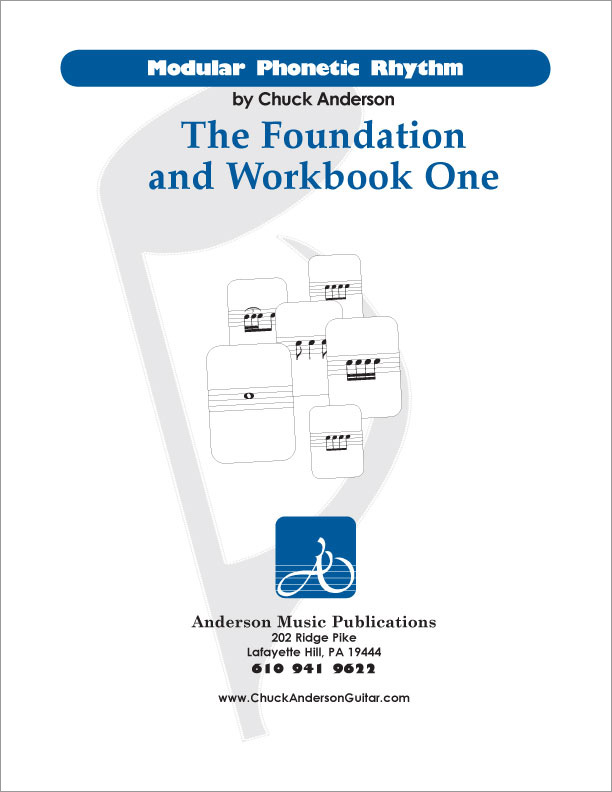
Modular Phonetic Rhythm represents a significant advance in the teaching and application of rhythm. Eliminating many inefficient aspects of rhythm education, Modular Phonetic Rhythm streamlines the traditional educational approach, resulting in a reflexive reaction to rhythm.
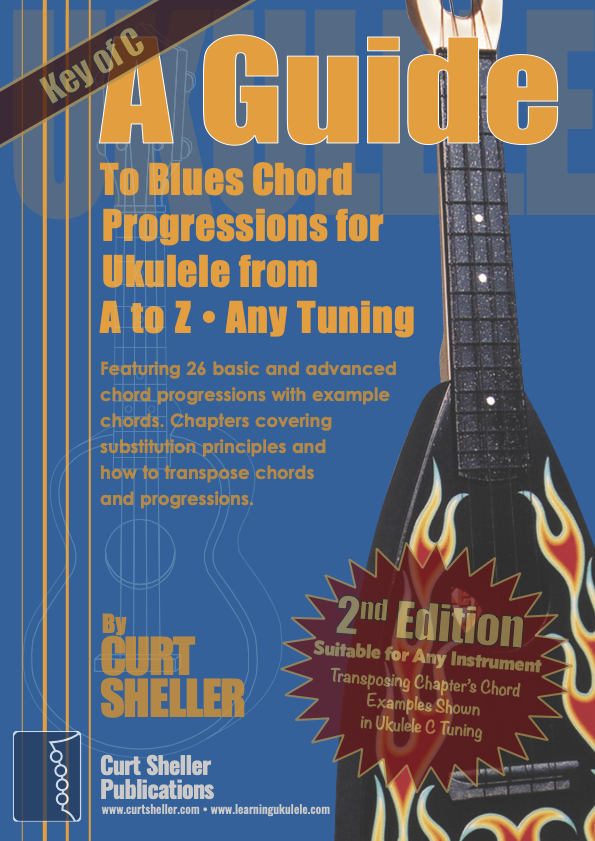
The Blues are at the heart of all American music. It has influenced Country, Rock, Folk, Jazz, Bluegrass and just about every form of American music we listen to today. 26 blues progression in C and G tuning, progressing from basic to advanced jazz progression, with chord grids and substitutions explained.
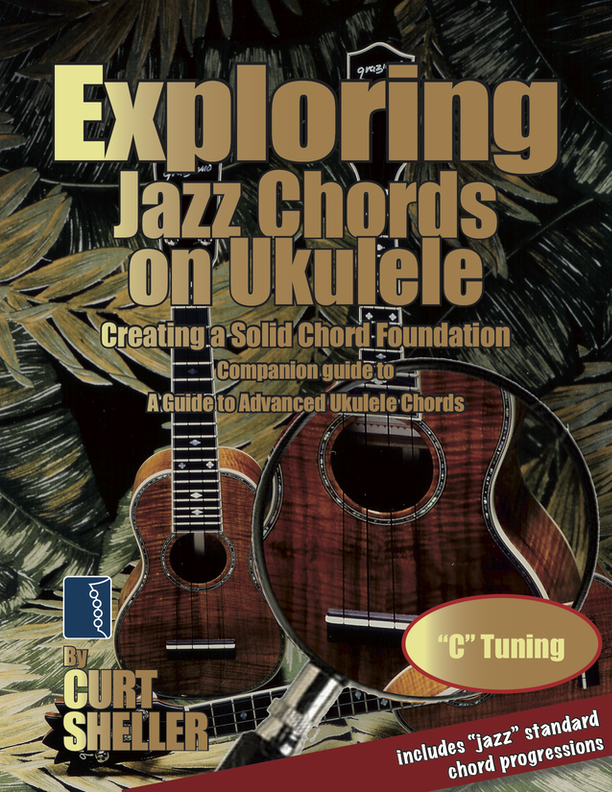
Exploring jazz chords using a variety of common chord progressions based on songs from the standard jazz repertoire. Core Chords are the basic set of chords needed to play a wide range of music, in a variety of styles. This set of chords includes basic open position chords, basic movable form chords and the core 4-part "jazz" chords.

Finally, learn the names of the notes of the ukulele fingerboard in C tuning .

Learn the six fingering principles to navigating the ukulele fingerboard. Fingering is one of the most universal topics. Book: Six Secrets of the Ukulele Fingering

Harmonic Analysis is the understanding of the functional sequence of chords. It is the process used to analyze the harmonic structure of a progression, song or composition. Book: Harmonic Analysis for Scale Selection and Chord Substitution

Learn to read single note melodies in the first/open position is a lot easier than you might think. Book: Ukulele – Reading Music Series – Primer

An organized collection of daily practice and reference material for the contemporary ukulele player for developing the vocabulary and knowledge necessary for single note playing. Book: Daily Practice Material for the Contemporary Ukulele
Checkout the Books & Reference Charts for additional Handy, Dandy Reference Charts.

Ukulele Fingerboard Chart for C Tuning, Low or High G – G C E A

Ukulele Fingerboard Chart for G Tuning, Low or High A – D G B E

A handy reference chart of all 15 major and relative minor key signatures. US Letter 8.5 x 11 sized (ANSI-A), A4
Checkout the Books & Reference Charts for additional Handy, Dandy Reference Charts.




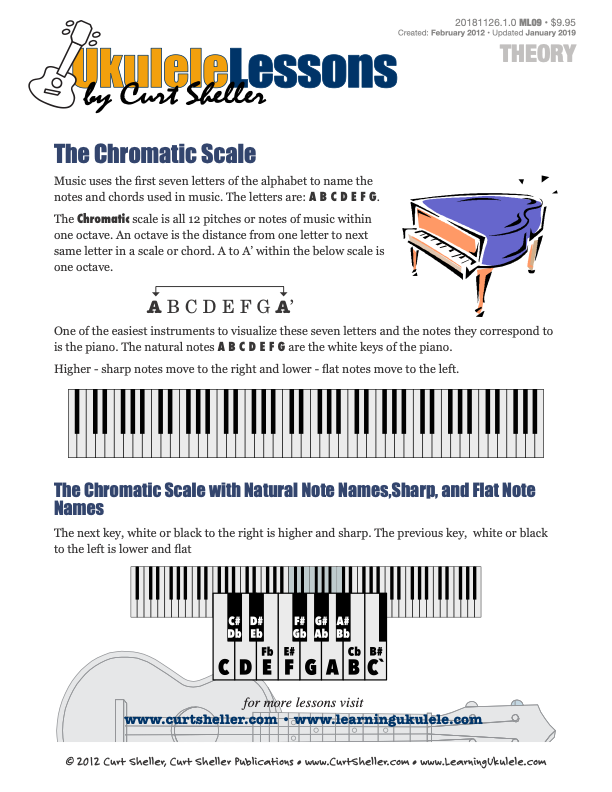
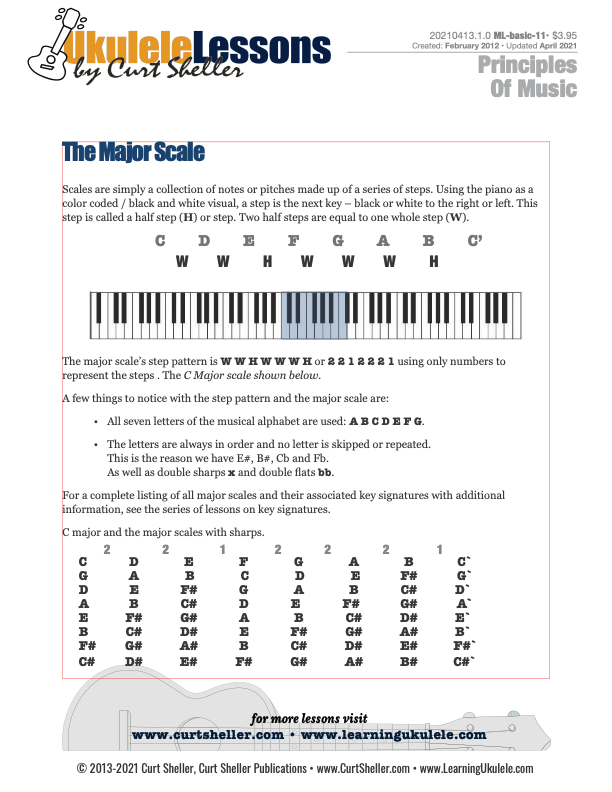
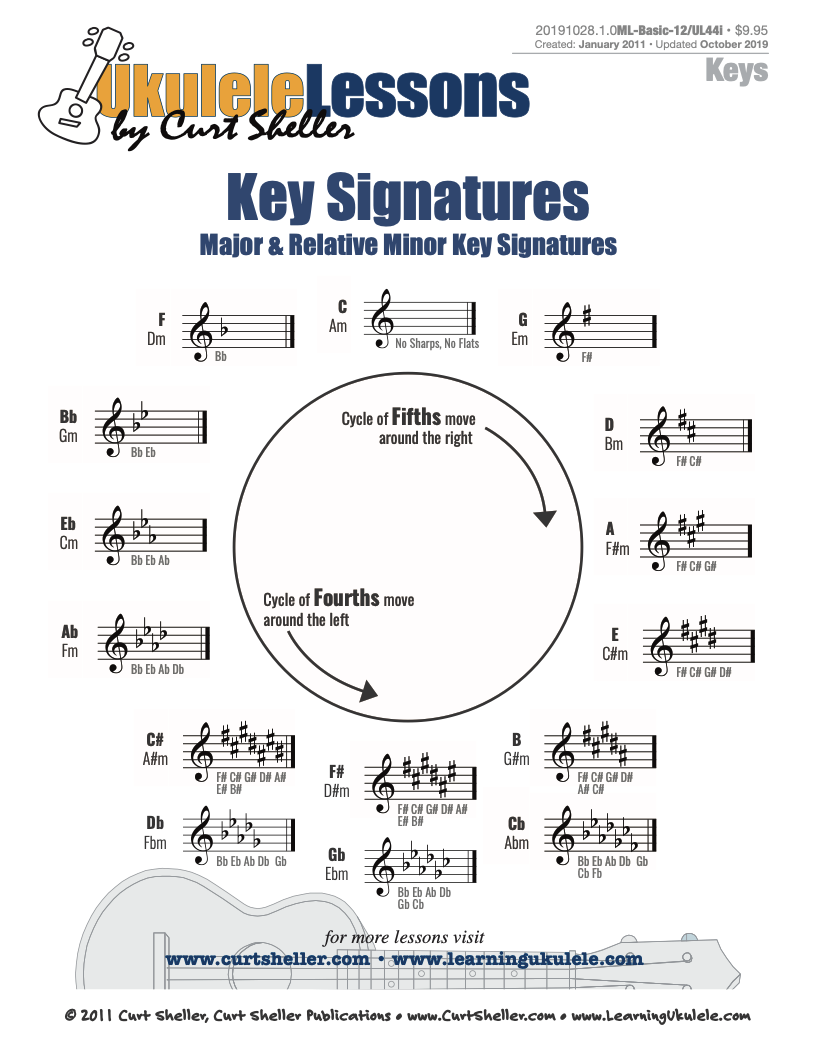
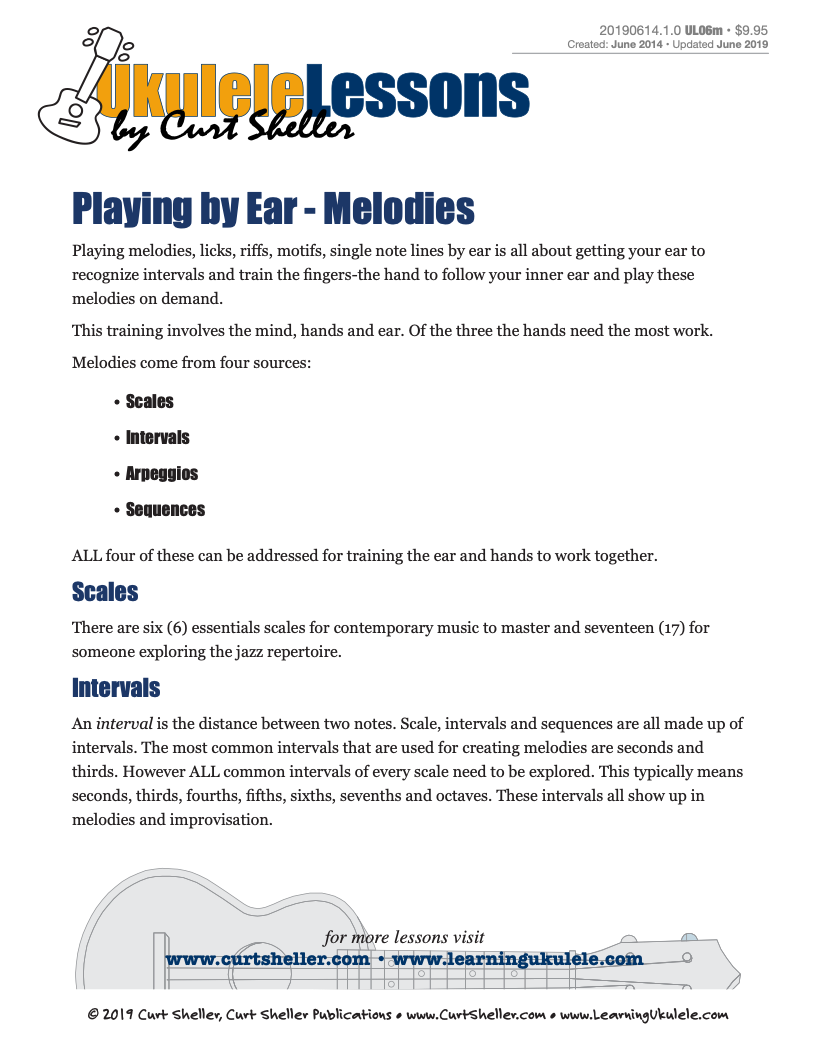

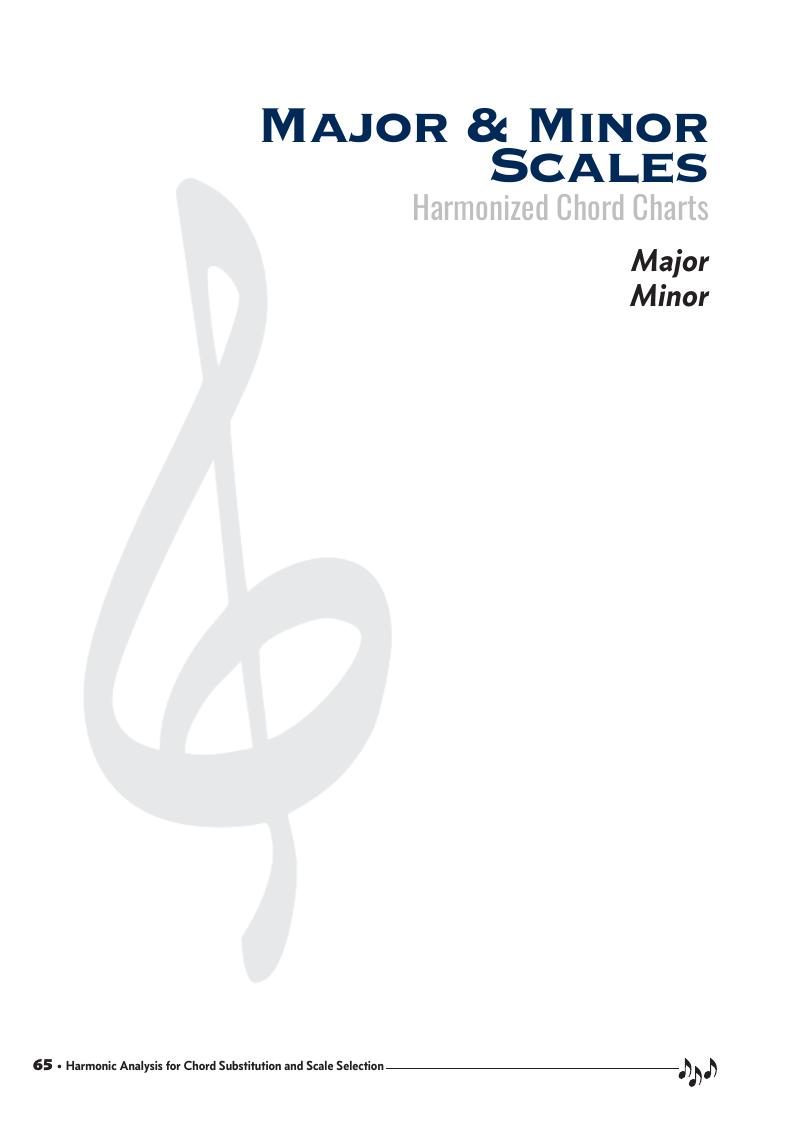


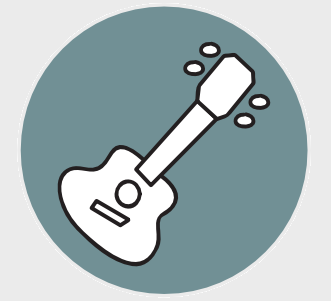

.jpg)